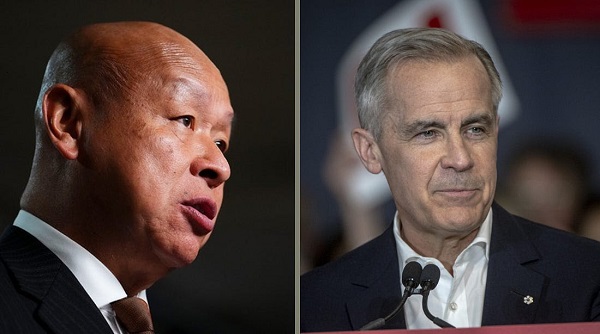Uncategorized
Province encouraging Alberta Doctors to see more patients by lifting daily cap

Improving Albertans’ access to doctors
To help increase patient access to physicians, there will no longer be a daily cap on the number of visits a physician can fully bill.
During the negotiations with the Alberta Medical Association (AMA), Alberta’s government heard that Alberta’s doctors could safely see more patients than the current cap allowed.
Albertans want to know that they can see a doctor when they need one, and physicians want to be able to provide Albertans with the health-care services they need. By changing the daily cap policy, some of the immediate pressures for services provided by general practitioners and specialists, including pediatricians and ophthalmologists, will be addressed. By lifting the cap, physicians will be fully compensated for every visit rather than receiving a discounted rate if they provide more than 50 visit services in one day, which is the current practice.
“We’re moving forward to implement the new agreement, starting with ending the daily visit services cap policy and working to put rate increases in place. We’ve heard from some physicians that the daily visit cap was having a negative impact on patient access, so this change addresses those concerns. It is also part of the new agreement with the AMA where we are listening to physicians and working with them as partners moving forward.”
“The AMA agreement allows physicians and government to work together on challenges facing patients and physicians in the health-care system. This early step to remove the services cap is an important example that will allow more physicians to care for more patients while helping to stabilize physician practices.”
Lump sum payment
The agreement between the AMA and the province also includes a one per cent rate increase in each of the next three years and a one per cent recognition lump sum payment in 2022-23.
Alberta physicians were at the forefront of the pandemic and the one-time payment for eligible practising physicians is in recognition of that work during the 2021-22 fiscal year. This lump sum payment is approximately $45 million and will go to the AMA to distribute to their members by the end of 2022.
In addition to the lump sum payment, the government is working with the AMA to implement the one per cent rate increase for 2022-23. The increase applies to fee-for-service and alternative relationship plan rates, providing an additional $46 million to physicians.
As outlined in the AMA agreement, the rate increase is heavily weighted to specialties facing the greatest pressures, such as family medicine. Alberta’s government and the AMA are working together to distribute these increases across and within specialties. Increases will be effective April 1, 2022, and are expected to be finalized by March 31, 2023.
Quick facts
- The daily visit services cap policy was introduced as part of the Physician Funding Framework in 2020.
- The intent of the policy was to support quality patient care by reducing physician burnout while addressing fiscal constraint for the province.
- It applies to all physician services that are defined in the Schedule of Medical Benefits (SOMB) as “visits” with a “V” category code that physicians provide to patients in person, including physician office visits, consultations and counselling services. Procedures and tests that physicians provide are not billed as visits.
- Under the current policy, physicians are compensated 100 per cent for up to 50 visit services billings in a day, 50 per cent for between 51 and 65 visit services, and there is no compensation for visit services billings greater than 66.
- Physicians working in rural and remote areas, hospital visits and virtual care are exempt from the current policy.
- The policy change (to lift the cap) aligns Alberta with most other jurisdictions.
- Alberta Health is working on updating the SOMB and billing system to operationalize this change. A Medical Bulletin and a new SOMB will be posted when information technology changes are complete.
- The daily visit services cap policy change will be reviewed and its impacts assessed before determining the future policy beyond the current fiscal year.
Business
Beef is becoming a luxury item in Canada

This article supplied by Troy Media.
 By Sylvain Charlebois
By Sylvain Charlebois
Canadian beef prices have surged due to a shrinking cattle herd, high transportation costs, and potential market collusion
With summer weather settling in, Canadians are returning to a familiar ritual—ring up the barbecue. But as they approach the meat counter, many are faced with shockingly high prices. This year, the meat aisle has become a case study in supply-side economics and market dysfunction, leaving
consumers to wonder how this all came to be.
Since January, according to Statistics Canada, beef prices have surged dramatically. Striploin is up 34.2 per cent, top sirloin 33.7 per cent, and rib cuts nearly 12 per cent. Pork rib cuts and chicken breasts have each risen 5.9 per cent, while even meatless burger patties are 6.8 per cent more
expensive. Beef has led the way in these increases, and its dominance in the price hikes is striking. What’s particularly concerning is that it’s not just one cut of beef—virtually every option has seen a dramatic jump, putting pressure on Canadian consumers who were already grappling with rising food costs.
The cause behind these increases lies in Canada’s shrinking beef cow inventory, now at just 3.38 million head—the lowest since 1989. This represents a 1.2 per cent drop from last year, but it signals much more than a cyclical decline. Many cattle producers, facing an increasingly volatile market, are choosing to exit the industry while prices are favourable. Others are opting to reinvest in less risky sectors or even shift entirely to crop production, leaving the beef industry in a precarious state. In short, Canada’s beef industry is retreating, and with that retreat comes rising prices, fewer available cattle, and growing uncertainty.
South of the border, the U.S. is seeing a similar trend, but far less severe. According to the United States Department of Agriculture, the
American beef cow herd declined by just 0.5 per cent to 27.9 million head. This relatively modest drop, coupled with less disruption in their production practices, has resulted in more stable prices.
Over the past year, U.S. boneless sirloin steak rose 5.7 per cent, compared to a staggering 22 per cent in Canada. Ground beef saw a 10.8 per cent increase in the U.S., but 23 per cent in Canada. The price difference between the two countries is stark, and Canadians are feeling the inflationary pressure much more acutely.
There are several factors contributing to the price hikes: Canada’s vast geography, high transportation costs, a limited number of federally licensed beef processors, carbon pricing, and higher labour costs. Carbon pricing, in particular, has added a burden to sectors like beef production, where transportation costs are high. Regulations and logistical inefficiencies add to the costs, driving up prices for retailers and, ultimately, consumers.
This combination of factors is having a compounding effect on the price of beef, making it increasingly out of reach for many.
But there’s another possibility we can’t ignore: potential collusion within the industry. In Canada, a small number of large processors control much of the beef supply, which gives them significant influence over prices. The U.S. government has taken strong action against price-fixing among major meat packers like JBS, Tyson Foods, Cargill, and National Beef, leading to multimillion-dollar settlements. In Canada, however, the Competition Bureau has remained largely silent on similar concerns, allowing the possibility of price-fixing to persist unchecked. Perhaps it’s time for Canada to follow the U.S. lead and ensure the beef industry is held accountable for its actions.
The consequences of these rising costs are already evident. According to IBISWorld, Canadian per capita beef consumption fell by 7.1 per cent in 2023 and is expected to drop another 2.1 per cent in 2024. This isn’t merely a shift in dietary preferences—this is a structural change in consumer behaviour. Beef is becoming increasingly viewed as a luxury item, with many budget-conscious households turning to ground beef as a more affordable option. For many Canadians, beef is no longer a staple food but rather an occasional indulgence, reserved for special occasions or holiday meals.
This shift is unfortunate. Beef remains one of the most natural, sustainable sources of protein available to Canadians. Ranchers and processors have made significant strides in improving environmental stewardship, animal welfare, and food safety, often without recognition. Beef is not only nutritionally dense but also supports rural economies and provides a level of traceability few other protein sources can offer.
For many Canadian families, a summer steak on the grill is becoming more of a splurge than a staple. While Canadians will continue to enjoy beef, the frequency and volume of consumption will likely diminish.
Barbecue season hasn’t disappeared, but for many, it’s starting to look a little different: more sausages, more chicken, and fewer striploins. A shame, really, for a product that offers so much more than just taste.
Dr. Sylvain Charlebois is a Canadian professor and researcher in food distribution and policy. He is senior director of the Agri-Food Analytics Lab at Dalhousie University and co-host of The Food Professor Podcast. He is frequently cited in the media for his insights on food prices, agricultural trends, and the global food supply chain.
Troy Media empowers Canadian community news outlets by providing independent, insightful analysis and commentary. Our mission is to support local media in helping Canadians stay informed and engaged by delivering reliable content that strengthens community connections and deepens understanding across the country.
Uncategorized
Poilievre on 2025 Election Interference – Carney sill hasn’t fired Liberal MP in Chinese election interference scandal

From Conservative Party Communications
“Yes. He must be disqualified. I find it incredible that Mark Carney would allow someone to run for his party that called for a Canadian citizen to be handed over to a foreign government on a bounty, a foreign government that would almost certainly execute that Canadian citizen.
“Think about that for a second. We have a Liberal MP saying that a Canadian citizen should be handed over to a foreign dictatorship to get a bounty so that that citizen could be murdered. And Mark Carney says he should stay on as a candidate. What does that say about whether Mark Carney would protect Canadians?
“Mark Carney is deeply conflicted. Just in November, he went to Beijing and secured a quarter-billion-dollar loan for his company from a state-owned Chinese bank. He’s deeply compromised, and he will never stand up for Canada against any foreign regime. It is another reason why Mr. Carney must show us all his assets, all the money he owes, all the money that his companies owe to foreign hostile regimes. And this story might not be entirely the story of the bounty, and a Liberal MP calling for a Canadian to be handed over for execution to a foreign government might not be something that the everyday Canadian can relate to because it’s so outrageous. But I ask you this, if Mark Carney would allow his Liberal MP to make a comment like this, when would he ever protect Canada or Canadians against foreign hostility?
“He has never put Canada first, and that’s why we cannot have a fourth Liberal term. After the Lost Liberal Decade, our country is a playground for foreign interference. Our economy is weaker than ever before. Our people more divided. We need a change to put Canada first with a new government that will stand up for the security and economy of our citizens and take back control of our destiny. Let’s bring it home.”
-

 National2 days ago
National2 days agoCarney promotes MP instrumental in freezing Freedom Convoy donors’ bank accounts
-

 Business2 days ago
Business2 days agoThe carbon tax’s last stand – and what comes after
-

 conflict1 day ago
conflict1 day agoIran nuclear talks were ‘coordinated deception’ between US and Israel: report
-

 illegal immigration2 days ago
illegal immigration2 days agoLA protests continue as judge pulls back CA National Guard ahead of ‘No Kings Day’
-

 conflict2 days ago
conflict2 days agoIsrael strikes Iran, targeting nuclear sites; U.S. not involved in attack
-

 International1 day ago
International1 day agoIsrael’s Decapitation Strike on Iran Reverberates Across Global Flashpoints
-

 Energy1 day ago
Energy1 day agoCanada is no energy superpower
-

 Alberta1 day ago
Alberta1 day agoPunishing Alberta Oil Production: The Divisive Effect of Policies For Carney’s “Decarbonized Oil”



